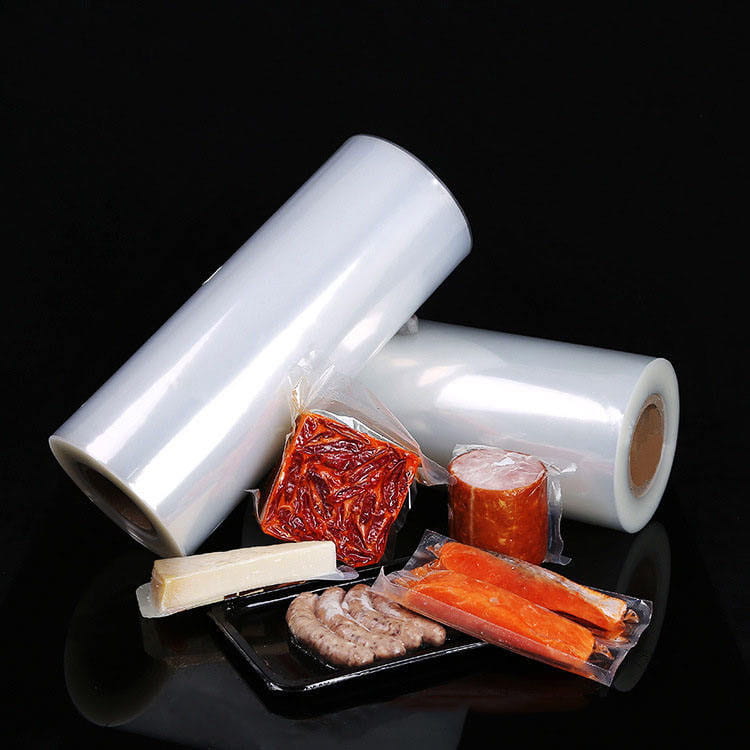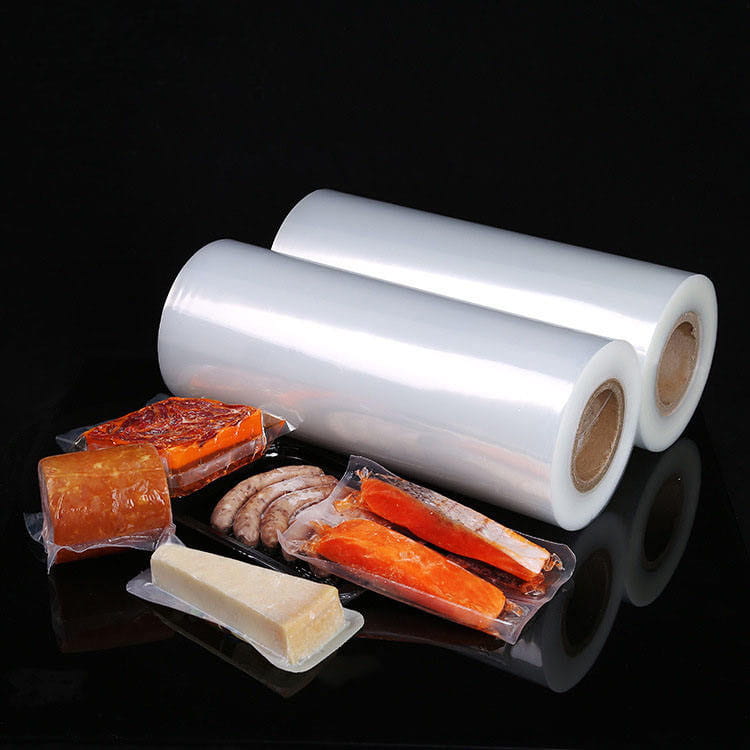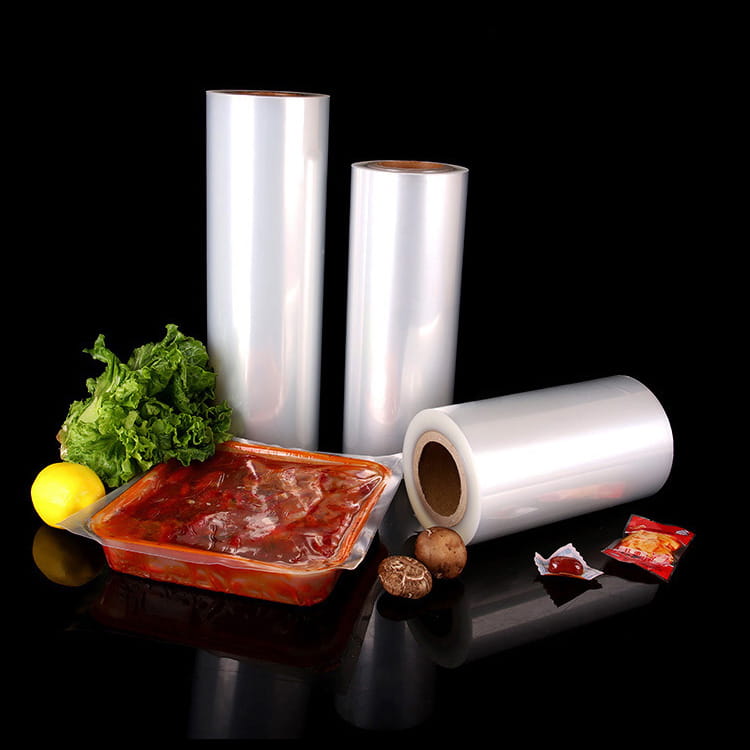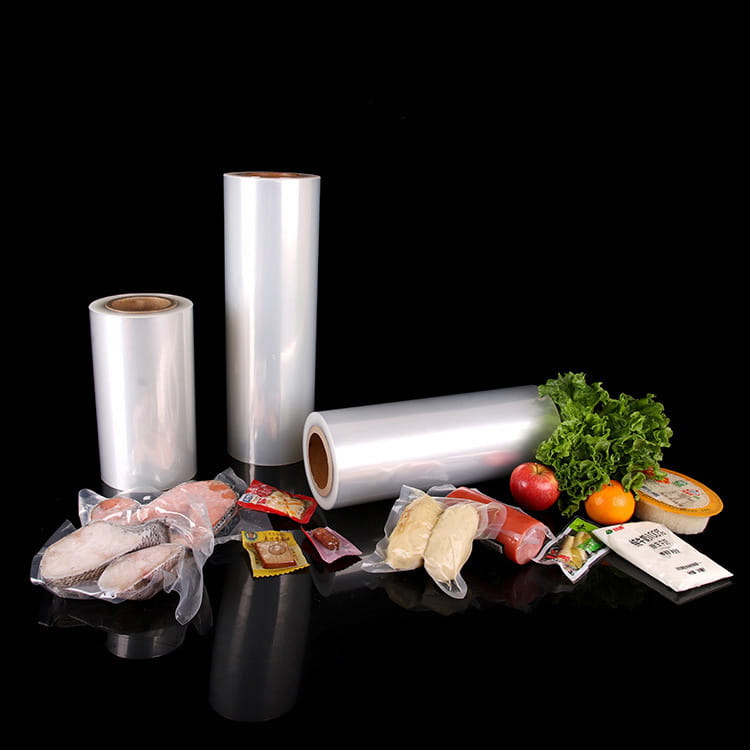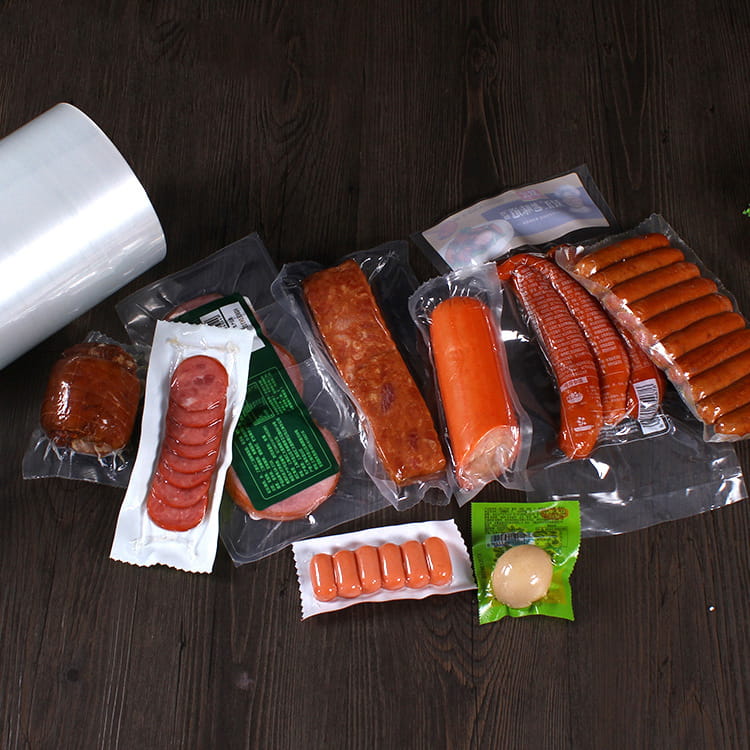The ultimate goal of food packaging is to extend the shelf life, ensure the safety of the contents, and meet consumers' needs for convenience and environmental protection. Traditional packaging materials (such as single-layer PE film and aluminum-plastic composite film) are limited by the singleness of the material and it is difficult to achieve high barrier properties, temperature resistance and mechanical strength at the same time. The nine-layer co-extruded high barrier film is a revolutionary breakthrough in food preservation technology by scientifically compounding the puncture-resistant layer, barrier core layer and heat-sealing layer through molecular-level collaborative design.
Structural design of 9-Layer co-extruded high barrier film: precise collaboration at the molecular level
1. Typical structural and functional stratification
The core of the nine-layer co-extruded film lies in its "sandwich" stratification design:
Outer layer: puncture-resistant polypropylene (PP) or polyethylene terephthalate (PET) is used to provide mechanical protection to prevent packaging damage.
Middle layer: Ethylene-vinyl alcohol copolymer (EVOH) and nylon (PA) form a barrier core. The dense crystalline structure of EVOH and the strong polar molecular chain of PA work together to form a physical barrier to oxygen, water vapor and odor.
Inner layer: Polyethylene (PE) with excellent heat sealing performance ensures the sealing strength of the package and prevents leakage of contents.
2. The bridge role of adhesive resin (TIE)
As the "molecular glue" between layers, TIE achieves a strong combination of PP/PET, EVOH/PA and PE through chemical bonding to avoid the risk of stratification. Its molecular chain design needs to be compatible with the polarity differences of each layer of material to ensure stable bonding during high-temperature processing (such as extrusion and stretching).
Fresh meat packaging: How does barrier performance inhibit microbial reproduction?
1. ""Invisible killer"" of microbial reproduction
During the storage of fresh meat, oxygen will accelerate fat oxidation, causing meat discoloration and odor; water vapor penetration promotes microbial reproduction and shortens the shelf life. The oxygen transmission rate (OTR) of traditional packaging films is usually 10-50 cm³/(m²·24h·0.1MPa), which is difficult to meet the long-term preservation needs of fresh meat.
2. Nine-layer co-extruded film solution
Ultra-low OTR: Through the EVOH/PA barrier core, the OTR of the nine-layer co-extruded film can be reduced to <1 cm³/(m²·24h·0.1MPa), effectively inhibiting the growth of aerobic bacteria (such as Pseudomonas).
Moisture-proof performance: Water vapor transmission rate (WVTR) <1 g/(m²·24h), preventing frost on the surface of fresh meat and keeping the meat fresh and tender.
Antibacterial synergy: Some products further enhance the microbial inhibition ability of the barrier film by adding antibacterial agents such as nanosilver and quaternary ammonium salts.
3. Evidence of extended shelf life
Laboratory tests show that the shelf life of fresh meat packaged in nine-layer co-extrusion film can be extended to more than 15 days at 0-4℃, which is 3-5 times higher than that of traditional packaging. Consumer surveys show that the color, smell and taste retention rate of fresh meat using this packaging are all over 90%.
Prepared food packaging: the "technical moat" of full-chain preservation
1. Preservation pain points in the pre-prepared food industry
Prepared food needs to go through multiple links such as processing, refrigeration, transportation, and heating. Traditional packaging is difficult to take into account the requirements of high-temperature cooking resistance (such as 121℃ sterilization) and low-temperature freezing resistance (-50℃ storage). Problems such as package damage, steam penetration or low-temperature brittle cracking will cause the contents to deteriorate.
2. The "full-chain" advantage of nine-layer co-extrusion film
High-temperature cooking resistance: The melting point of the outer layer PP or PET is greater than 160℃, which can withstand high-temperature sterilization process while maintaining the integrity of the film.
Low temperature freezing resistance: The flexibility of the inner PE layer can still be maintained at -50℃ to prevent the packaging from being brittle.
Puncture resistance: ≥5N puncture resistance ensures that the packaging is not damaged during automated packaging and transportation.
Liquid packaging: ""safety shield"" with high puncture resistance and flexibility
1. Transportation risks of liquid packaging
Liquid products (such as sauces and beverages) are susceptible to extrusion and puncture during transportation, resulting in leakage. The puncture resistance of traditional packaging films is usually <3N, which is difficult to cope with complex logistics environments.
2. "Safety design" of nine-layer co-extruded film
Puncture resistance layer: The molecular chain of the outer layer PP or PET is rigid and can withstand puncture from sharp objects.
Flexible core: The elastic combination of the middle layer EVOH/PA and the inner layer PE ensures that the film automatically rebounds after being stressed to prevent leakage.
Explosion-proof design: Some products further improve impact resistance by adding a buffer layer or using a directional stretching process.
3. Transportation safety verification
Laboratory simulation transportation tests show that the breakage rate of liquid products packaged in nine-layer co-extruded film is less than 0.5% when they fall freely from a height of 1 meter, which is much lower than the 15%-20% of traditional packaging.
Industry challenges and future trends
Material cost: High barrier materials such as EVOH are expensive, and the cost needs to be reduced through formula optimization.
Recycling problems: The multi-layer composite structure increases the difficulty of film recycling, and single material technology needs to be developed.
Bio-based materials: Bio-based resins such as PLA are used to replace fossil raw materials to reduce carbon emissions.
Smart packaging: Integrated sensor technology monitors the gas composition in the package in real time and warns of deterioration risks.
With the upgrade of the ""plastic ban"" and food safety regulations, the nine-layer co-extruded film needs to pass stricter certification (such as FDA, BRC) to meet global market access requirements.


 English
English عربى
عربى



